‘I did not write half of what I saw, for I knew it would not be believed’- Marco Polo
The Camino de Santiago (the way of St. James). An ancient Christian pilgrimage and a UNESCO World Heritage site, with various ways that join to arrive at Santiago de Compostela, where the tomb of St. James is located. From here many walk to the coast, to what was once thought to be the end of the world: Fisterra, and on to the fishing village of Muxia. Around 300,000 pilgrims (‘peregrinos’) continue to walk, cycle, go on horse back, and even run different parts or the entirety of a route every year, for different religious, spiritual, historic, and personal reasons.
When I said I was walking the Camino, many looked at me blankly. I did not know much about it either, but felt the urge to go (you could say the Camino called me I guess, like many do). My preparation was to hastily purchase a guidebook, watch ‘The Way’ movie, and a recent BBC documentary a week before my trip. It was a nice way to resist developing any expectations!
Check my packing list here.
1000km later but the experience currently feels indescribable. When I begin to try and quantify the experience with 30 days, 4 blisters, a tub of vaseline, one lost toenail… I soon lose count. The Camino certainly cannot be contained or described, but experienced. It is such a personal inner and outer journey I feel it cannot be justifiably captured. However here are some general suggestions and points we often spoke about on the way, which may or may not resonate.
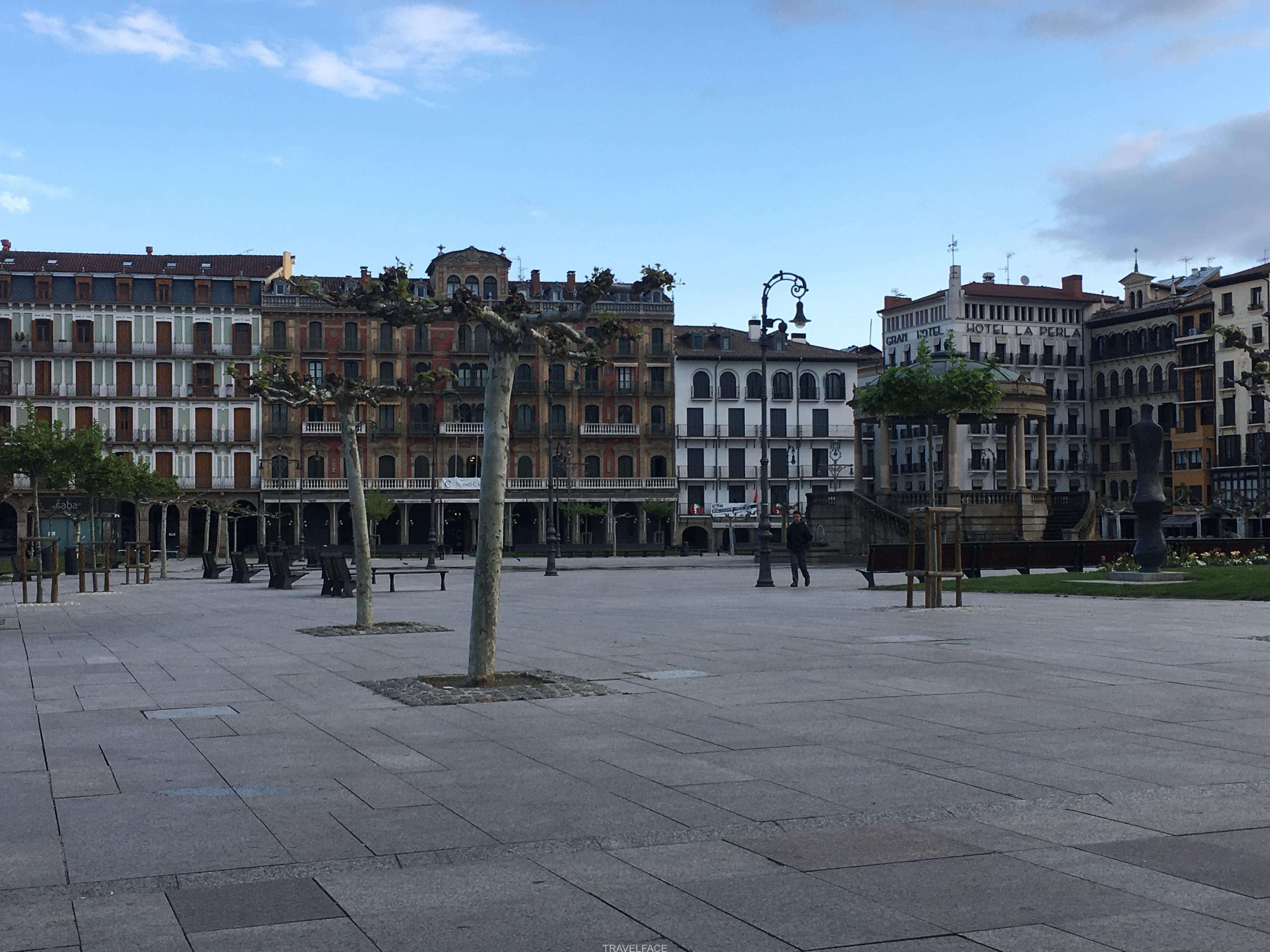 thank you (correct) yellow arrow markers
thank you (correct) yellow arrow markers
The Camino Frances is well-marked overall so map reading is not required. There is a mix of spray painted arrows, official markers/ signs, and scallop shells on pavements. Occasionally you get the odd questionable marker detouring you through a village, or an alternative route with less markings. However I cannot explain the joy seeing a yellow arrow can bring. There is a sense of separation anxiety when you have not seen one for a while. I miss these simple directions which seem to pop up just as you begin to convince yourself that you are going the wrong way. There were a few ‘thank you’ out loud moments.
Thank you to whoever marked the way back to Santiago also. It meant less shuffling backwards to read the signs, less kms getting lost, and reduced need to wait for passing pilgrims to confirm the route.
A friend on the Camino beautifully reflected how the yellow arrows are also within us; showing us the way, as we continue on the Camino in our own lives.

Despite the arrows, you probably will get lost
Map reading may not be required, but those yellow arrows can make you relax and enjoy your surroundings a little too much. For me it was 1km off course at a crossroads with a pilgrim following me when I admitted I had gone wrong, with no arrows in sight. Retracing our footsteps and picking up another lost pilgrim on the way, we noticed the glaringly obvious arrow I had merrily passed. For my friend, it was 4kms later when a farmer broke his meditative walking to tell him to turn around!
There are certainly worse places to get lost. Walking from Muxia to Oliveron was the most challenging day for my common sense because there were less markings. Do not worry though, as locals will always direct you (or at least stare at you in confusion). Despite going wrong multiple times meaning many kms were added to the journey, I got there in the end. It always works out!
Pay attention in cities, as it can be easier to miss arrows here. For example Burgos is the city that keeps on giving (it takes a while to get to the centre to put it mildly. Opt for the marked river way).

food and vino is plentiful (and cheap!)
I cannot quantify how much pan and vino tinto I drank. Often pilgrim meals in the evenings were 8-10 euros and included three courses (for example 1st plate may be pasta, salad or soup; plate 2 fish and chips, meat and chips etc, postre ice cream, cake or fruit; and plenty of bread and wine or another drink of choice).
Generally the albergues listed on the ‘Vegetarian Way’ offered incredible and varied food.
Vino tinto was also the best cure for blisters FYI.
I did cook on occasion. Communal meals often worked out cheaper, either by sharing the cost or if it was by donation in some of the municipal albergues. When I cooked alone I found it cost a similar price to a filling pilgrim meal, so often opted for that.
Snacks are easily purchased, from nuts to fruit. It is handy to have some especially on the meseta (the ‘flat’ plains between Burgos and Astorga with long stretches between towns). I love bread so often had some with me, on occasion with some sandwich fillings for longer days and general snacking. Freshly baked warm bread from cosy bakeries, especially during the first week from St. Jean, was always a treat.
Plus, a cafe con leche break or two never goes amiss. Most days bars are plentiful.
second breakfast is a thing!
To all those who like breakfast, a second breakfast is totally acceptable on the Camino around mid-morning thanks to the many bars you pass on the way. Great for when you fancy both a croissant and tortilla. One friend often had their first Clara Beer (lemon beer) by 10am.
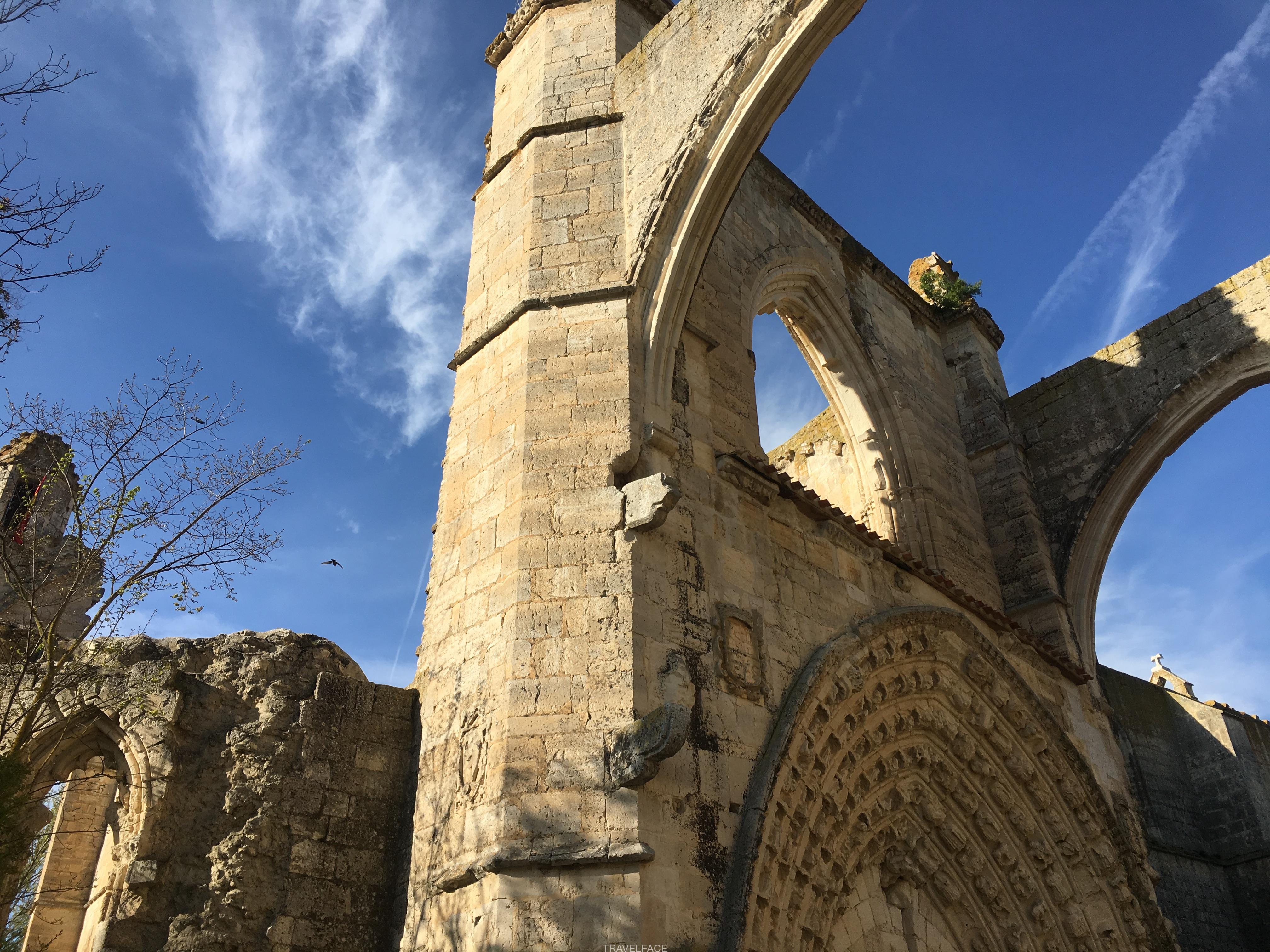
chocolate, and general sharing brings joy
A quick way to make friends and spread happiness. A Canadian couple who were on their third Camino gave us this wise advice whilst handing out chocolate squares at a coffee stop. I then started to purchase chocolate and give it to fellow pilgrims. It was also a quick way to comfort my friend and I when we were sat in one of the more questionable albergues.
People are so open and kind on the way. Items such as food and first aid were always being exchanged and shared. I even received a t-shirt when I spoke about leaving mine on a washing line somewhere. Generally the warmth of fellow pilgrims is never far away; from a smile or chat to a hug and a listening ear.
Give back also. Whilst it can be frustrating, pick up litter you see on the way if you can. There is not much, but there will be even less if you help.

buen camino can be said with gritted teeth
We joked about shortening ‘buen camino’ (good path) to ‘BC’ halfway through our trek. Exhaustion, a few bus loads, those walking suspiciously fast to overtake you as they enter a town (maybe bed racing… or perhaps desperate for the toilet?), ninja cyclists, snorers who vibrate the room, and just the many people you pass when you are struggling, can test your ability to remain tolerant and wish ‘buen camino’.
Walking back to Santiago I had a renewed appreciation for this exchange. A few pilgrims looked at me with such openness and knowing as they said it that I felt it. A few others looked at me with gritted teeth, such as when I cruised down hills as they were going up. Usually joking that they were going the wrong way would lighten the mood. It is all part of the way.
My friend on the way used to say ‘kinder bueno’ what was fun. I handed out quite a few kinder buenos much to the delight of the pilgrims receiving them.
John brierley’s name can also be said with gritted teeth
Towards the end of the Camino after a few vinos at one of the communal meals the first pilgrim caved: ‘does anyone want a picture of John Brierley’s face? I cannot look at it anymore!‘ Said in the nicest way we all laughed and admitted it: we had become vexed at Brierley at some point. His guidebook can be challenging to read at times. More so when a distance of 8km definitely was more like 12km, and when a way marked as flat was one of the steepest parts.
Overall I found it a useful guidebook to have, mainly using it for knowledge on upcoming towns and facilities. It can also prompt some spiritual points. However there are smaller lightweight guides such as the Michellin guide, and a German guide called ‘Outdoor’ mapped most towns between stages. Some may find these more appropriate.
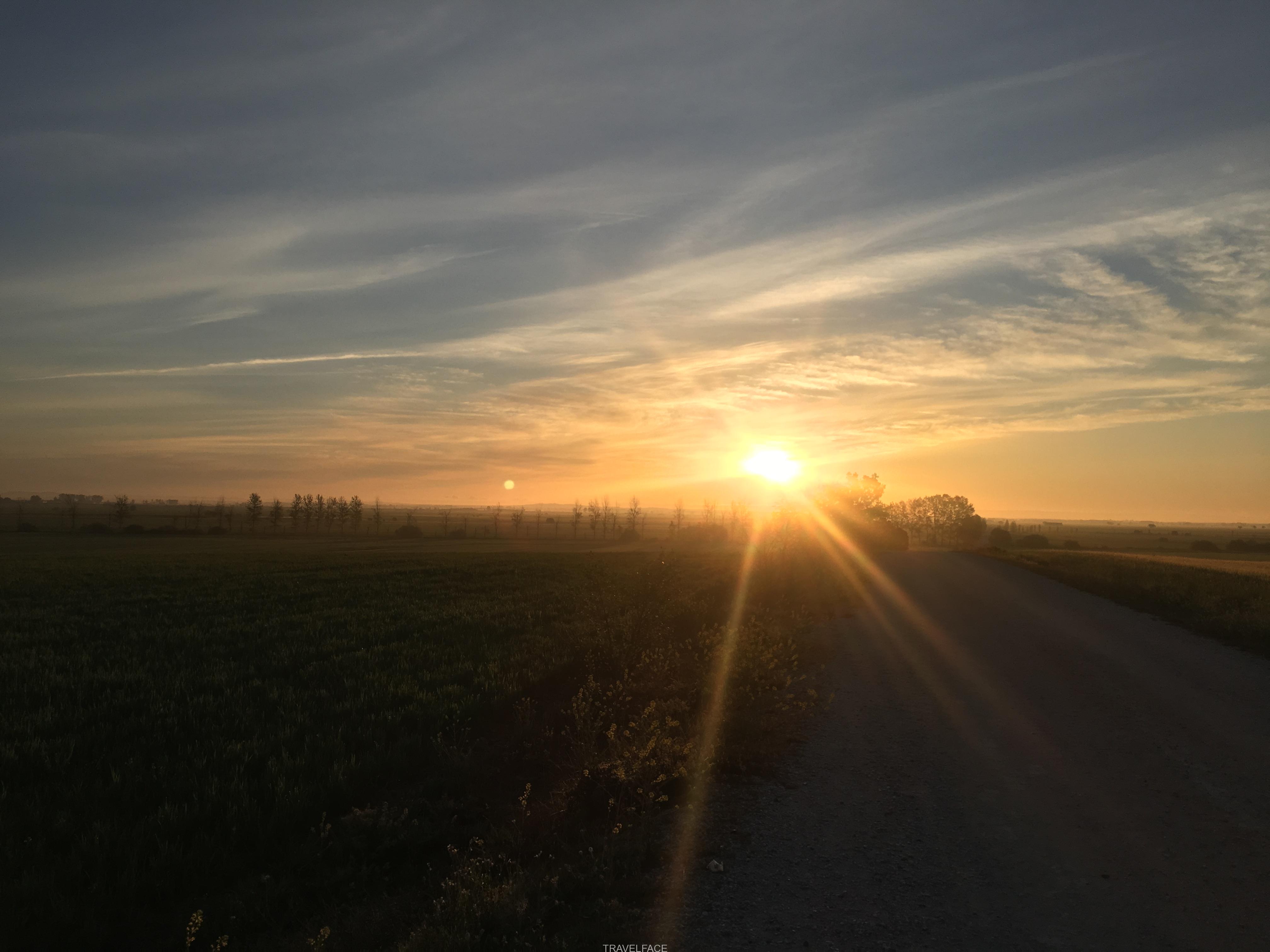
headtorches come in handy in more ways than one
Some snorers take it to the next level. A flashing head torch seemed to quell one particularly loud snorer’s rant when an open window and turning him over failed. Headtorches could also be shone on any sneakily closed windows, at which point the Camino camaraderie was often put to test, with many debates between different countries arising; leading to huffing, slamming, and mutterings.
hiking poles also do
I was quite glad to have my poles walking back from Muxia for one of their secondary uses. This was the one day a dog (fitting the rumoured aggressive Camino dog description) closely followed my path, barking at me for some distance. Gripping my poles tightly, they would have been my weapon of choice if needed, but luckily walking slowly away worked. My sticks also helped drag me up hills, play out imaginings of hitting a few Camino friends who seemed way to sprightly when I was struggling, acted as a back stretcher, and they gave my arms a slight workout; whilst preventing swollen hands by keeping circulation going.
Just do not leave them in any bar, as you will seriously question your commitment if you have to retrace your steps.
alternative ways are great but you will question them
Your final few kms each day will feel tough, regardless of the route or distance covered, as your legs turn to jelly, and you cannot decide whether a shower or sleep would be more welcome. I recommend taking the signposted alternative routes which are often more scenic and away from roads. The small print is that they often entail extra kms, and those extra kms will be questioned at some point, especially when you are walking into wind unable to speak or hear anything, knowing you would have arrived if you had taken the road route!
I loved the ‘duro’ route from Villafranca del Bierzo. I only saw two other pilgrims and was blessed with the most beautiful views. Initially it is steep but worth it. There is a small village on this route with a couple of bars you can stop at for a cafe con leche and food.
so many questions, but never why you are still walking
Many questions arise from why you packed so much, why you have so much stuff at home, to philosophical and spiritual questions, along with so many more. Walking each day is meditative with little to worry about. Your routine is simple. For me this was usually awakening and leaving by 6am, resting at the first bar open for breakfast (and multiple others), then stopping when I wanted. This was usually by 2pm. Then it was time for showering, hand-washing clothes, socialising/ siesta-ing (or both), and dinner.
Despite the physical and mental struggles, we agreed none of us had questioned why we were still walking, or what had possessed us to keep going. We continued on.

‘the way’ is pretty accurate
Yes, most people have watched ‘The Way’, with many being inspired to walk the Camino as a result. Whilst the clever camera angles often disguised the nearby roads, and it did not capture how tough the 800 or so km can be, here are some accurate points:
- Everyone has their own ‘Ramon’ experience – there are plenty.
- You may start to walk the wrong way through St. Jean Pied de Port, plenty of people did!
- With that, most will also have a drunken experience, although hopefully not with the arrest….
- You do miss your Camino friends when you separate, no matter how much you may want to hit the odd one with a hiking pole whilst walking together.
- There will be someone doing it to give up smoking, lose weight, and there are creatives looking for inspiration.
- There are discussions around medications, and the odd ‘interesting’ smelling cigarette.
- You do keep bumping into the same people regardless of how far or fast you walk, and they will meet each other too so your story will spread.
- You will have a desire to walk to the ocean once in Santiago. And maybe a desire to keep walking or travelling after that.
- People will use their hiking poles like Joust.
- There is impromptu dancing and singing.
- You do end up sharing your story with someone, or many.
- Pinxtos and tapas do have a difference, with an explanation often given in Spanish.
- Fun fact: monks do make a Galician liquor apparently!
- The botofumiero is beautiful to watch, so enjoy the moment and the emotions it stirs up. It is swung more commonly than expected. It was swung right at the end of 12pm Monday mass I attended.
Just a few of many similarities, you may find more!
Look out for some of the movie spots that were filmed en route.
first open bar. always.
Scatterings of plastic red chairs laid out, often an ice cream sign and an open door will bring a level of relief greater than getting that last parking space, catching the right train or avoiding a car parking ticket. Most people’s routines are to get up and walk until the first open bar. As I was often walking from 6am, this could mean I was 10km+ into my hike. Do not make the rookie error (this happened a few times) of continuing past the first open bar. You will either have to walk back through the town (possibly up a hill), or walk on through multiple towns until the next sea of plastic red chairs presents themselves.
The plastic croissant (croissant in a packet) and cafe con leche tastes incredible every time.
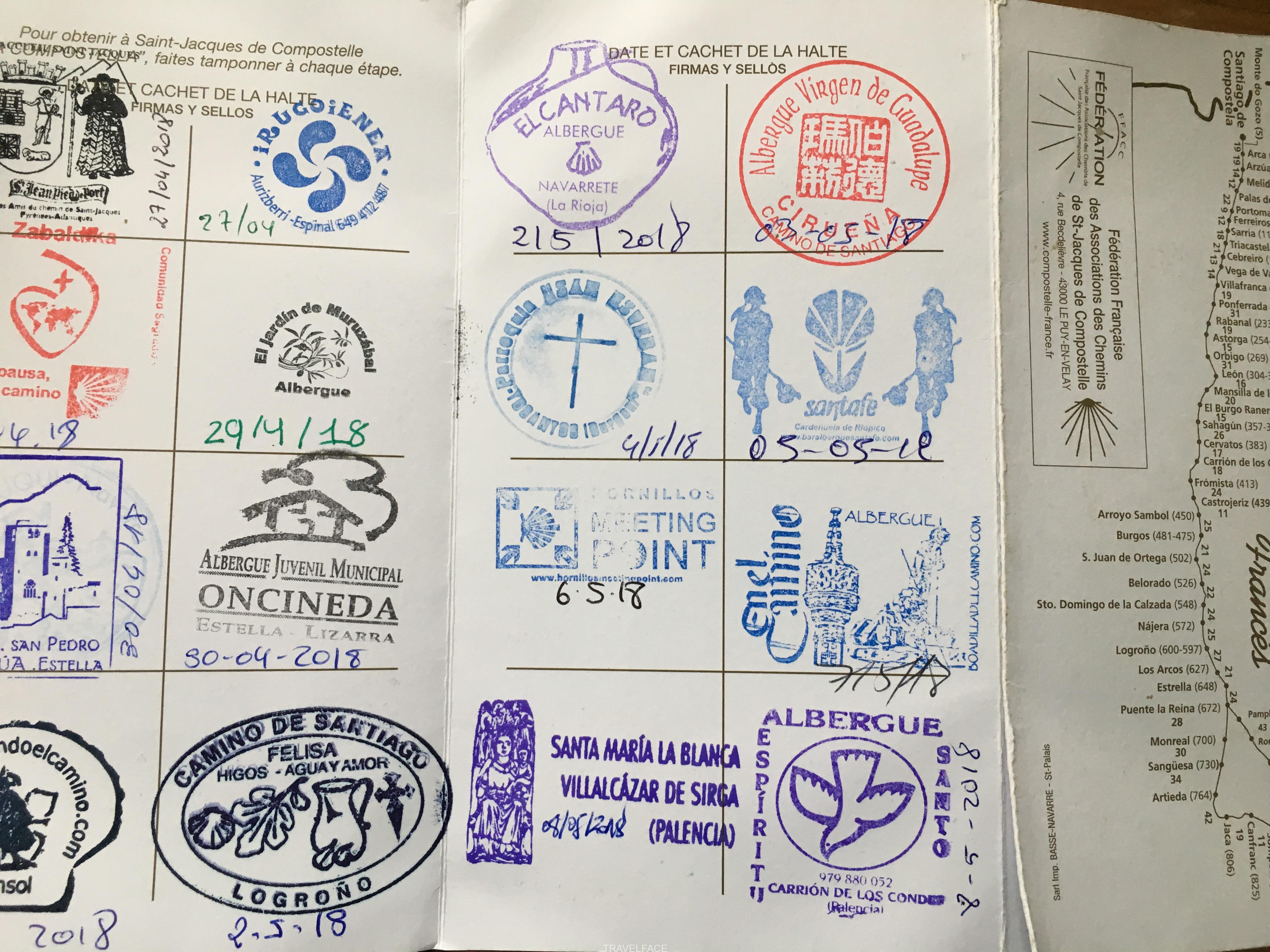 stamps and feet are new fascinations
stamps and feet are new fascinations
Regardless of how you feel about having to collect two stamps from Sarria to get your compostela in Santiago, the stamps you collect in your pilgrim passport are a lot more impressive than country stamps. They can become quite the obsession for those who collect as many as possible. Purchase your compostela for a few euros at the Pilgrim office in St Jean Pied De Port, before you leave online or along the way.
Feet are also a hot topic. Literally so if you get hot spots whilst walking. Do not worry, you will continue to get reminders of your agony when you stop walking, as fellow pilgrims will definitely ask about your feet. Everyone gets a least one blister and will advise on how to treat yours regardless of how much of a limp they have.
You cannot hide the limp when you start walking or after a break. Embrace the feet issues.
I drank a few beers on the first night part in fear of the way my feet were looking, but as fellow pilgrims reassured me, they were fine in the morning. Two weeks in I muttered that I had not got blisters (almost feeling left out). The blisters then came in all their glory.

take advice (and distance markers) with a pinch of salt
It is a personal journey so you may find your experience is quite different from others who have or are walking. For example everyone warned of the bus loads of tourists that would be present in Sarria jostling for beds and crowding the trail, but when I walked through it was a ghost town! I tended to sleep in smaller towns but even managed to get a bed after a particularly long day at a popular Brierley stage. In fact it was busiest on the trail one day during the first week. I only saw a handful of pilgrims walking into Santiago, but others saw many.
There is also no right way to do the Camino. When a group hop out a bus and stride past taking pictures, remember it is their own experience, done that way for whatever reason. Someone will always challenge your way too. You may prefer to sightsee in the cities but others will prefer smaller towns, some may camp or stay in albergues but you might like hotel rooms. I was called a ‘Camino runner’ a few times due to my distances each day. It did not feel like rushing in the slightest, or running for that matter… what would have been quite impossible for me!
My friend gave me some fairly accurate advice: The way can challenge you in different stages. Firstly physical (this lasted a while for me), secondly mental (often on the plains), and then spiritual, if you are open to it. How you interpret this is down to you.
The final 200km to Santiago and markers to Fisterra count down the distance remaining (the 100km marker had been removed when I walked). Take it with a pinch of salt, as you may notice sudden increases or inconsistent declines in distance on the markers.
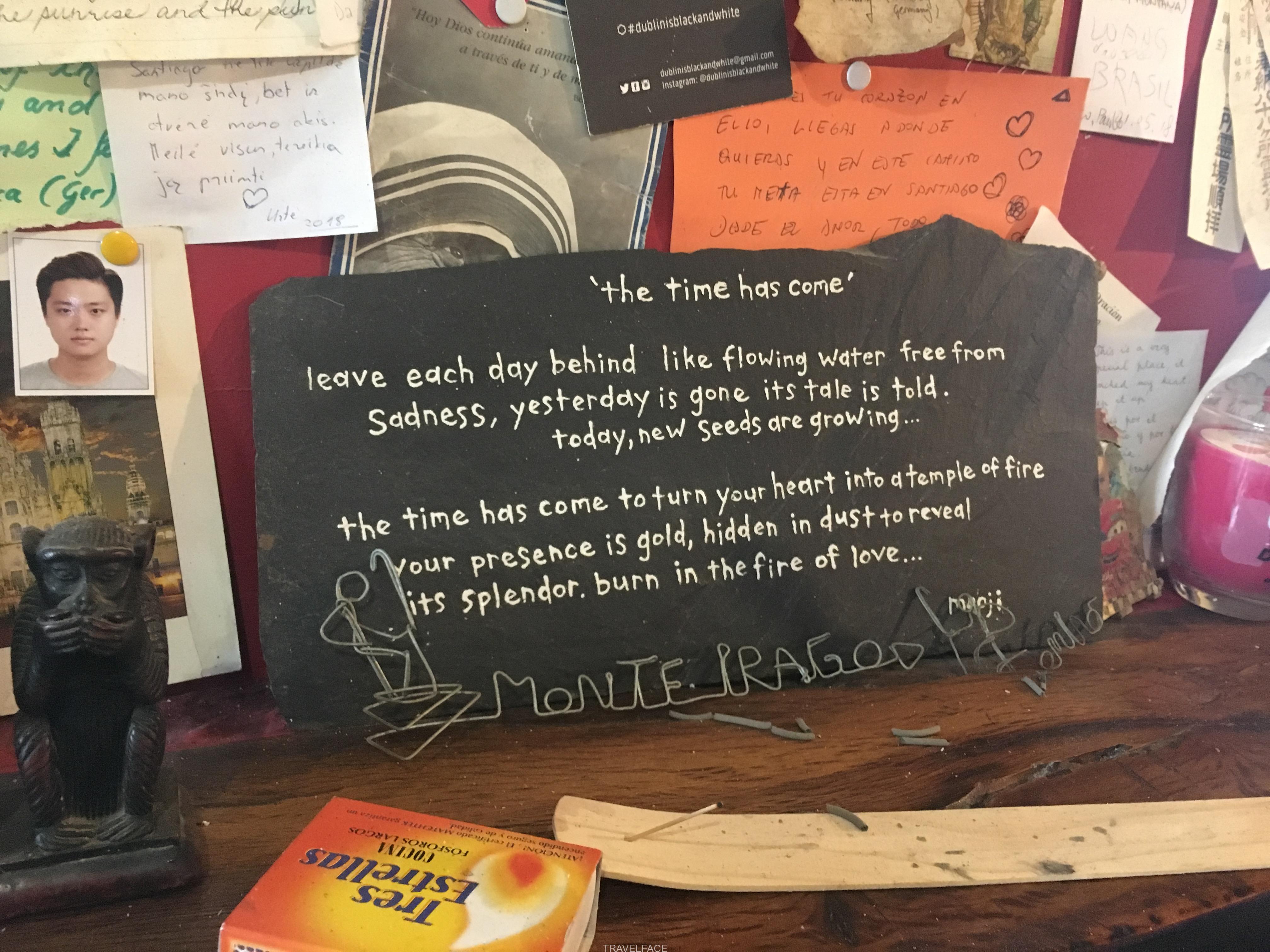
let go (you’ll have to!)
The Camino encourages you to let go. Go with it. The plan to arrive at a certain time, do a certain distance, or have a certain moment will diminish. You cannot control it like you cannot control much of life. Embrace the unpredictable moments, you figure it out!
Whilst it can be useful to have some idea of towns you will be passing through each day, try not to plan too much. Stop when you want, explore points of interest, check out what albergues look nice and have a bed, then go from there. I never planned to get to Santiago when I did, or walk on to the coast and back.
Try not to limit yourself to albergues friends recommend in particular towns, wait and see where you end up, if it is there great. If not, some of the most special albergues are the ones you stumble into with no expectations.
I would recommend taking your watch off and not looking at your phone during the day. ‘Bed race’ anxiety is aired around and easy to get swept up in. Be mindful of this and try not to worry. Some people chose to reserve beds, but you will get one somehow or somewhere, even if you have to persuade a hospitalero to let you sleep on the floor. You do not want to pass up that appealing church, viewpoint or coffee break. One of my friends would spend time meditating, walking slowly and arriving whenever she fancied. She had the faith and never had any issues!
I laughed as I arrived in Santiago for the second time. A race was happening meaning loud music, plenty of people and a megaphone blaring spanish commentary. Not exactly the entrance I planned for.
As a wise friend said, the Camino gives you what you need, not necessarily what you want.
When I sat in the cathedral square for the last evening an impromptu dance party begun with a band playing, and lots of people appeared who I had met on the way at various points. I would be walking in the middle of nowhere and happen to come across a donativo stand and insightful conversation. Suddenly you can be struck still by a breathtaking view. You cannot plan or predict moments fully, but the moments that tend to be most unexpected tend to be the most magical.
Once you let go lots of magical moments seem to arise. Ride the wave!
camino coincidences
At times coincidences stretched the laws of statistics beyond comprehension. We called them magical Camino coincidences; sometimes welcomed, sometimes not! Roll with it and see what unfolds.
At times people report what could be worded miracles, but there are many wonderful moments. Like when you are alone in a random Santiago tapas bar on your last night, and happen to bump into friends from the way who had also all met at different points.
Be prepared to get to know yourself
Often the person we know least. The way is a crash course in being human which comes with all our messy flaws. It allows you to reflect and shed light on them. From your intolerances and judgements, to expectations and everything else we like to ignore. It does not mean you will greet crowds with open arms after four weeks of reflection, but maybe with more empathy and detachment.
You may cry unexpectedly, be angry, love, laugh from nothing, sing out loud, be frustrated, talk to yourself, have a Camino bladder, and do things you never thought you would. It certainly teaches you a lot about yourself.
You will also get an renewed appreciation (or awakening) on what it means to have a body. It will scream at you and not act in the way that you want it to. For me that meant often physically hurting when I led down to sleep for the first 10 days. I would roll over any uncomfortable mattresses for an hour or so to get the right angle. It meant pains in areas I did not know existed, and injury when I least expected it. Plus of course blisters. Do not say you have not got blisters until you are on the plane home.
Treat your body with respect and wonder at how amazing it can be, especially when you become more mindful of it.
Do not ignore pain, listen to it and act accordingly.
but you NEVER HAVE TO BE ALONE
I enjoyed early mornings when I walked alone as the sun rose. However you never have to be alone, especially with the flow of pilgrims on the Camino Frances.
I walked with people for days, hours or sometimes minutes. Often someone would come up right at the moment I was about to give up. When we parted ways the ‘buen camino’ often came with the silent tagline ‘thank you for literally saving me today’.
The same went for the unity of communal meals, and the wonderful hospitaleros (albergue volunteers and owners). Not forgetting the joyful ‘donative’ stands offering fruit, drinks, and snacks; often with an interesting owner.
Generally the Camino strips away distraction and differences from our everyday lives. This, and the shared goals of the way allows for an opportunity to feel connected. This often means a lot of love, openness, and experiences to exchange with fellow pilgrims. And friends for life. Whether you stay in touch or not.
If you see someone alone, ask them to join you.

talk, listen and embrace the awe
With all this company and people from all walks of life, there is much to gain and give. Even when you are struggling, take time to breathe and listen. It is quite the privilege to provide the listening ear someone may have been waiting for. We all have a story, whether there is a particular reason we are walking or not.
Often reasons present themselves as we walk!
From the woman who takes her blind daughter around the world to describe it to her, the three pilgrims who let me stargaze with them and gave me breakfast, the cancer survivors, the divorcees, the creatives, the addicts, those considering a midlife change in career, those suffering with mental health and loss, the powerful mums, the powerful career women, the eccentric pot-smoking philosophising guitar-playing wanderer, those who started at their own homes, the first timers and repeaters (one being 81 and on his 9th Camino), and the 69 year old who walked across Africa then hitch hiked to Madagascar…Many will bring tears, awe, surprise and laughter to your day; so listen up.
Also, remember you do not owe anyone anything but respect. So if you would like to walk on, say. This is the nature of the way and pilgrims will be fine with it. Do not feel obliged. You will know when you need to walk alone or walk on. You will also know when this part of the Camino ends for you. It may be in Santiago, the coast, or like me, once you have walked back to Santiago (or by going again!).
Not a vacation, not just a really long walk
It can be seen as taking ‘a really long walk’, in the words of Martin Sheen in ‘The Way’. Regardless of your experience of the Camino, it is simply amazing to be able to walk every single day. The freedom and privilege of this is something quite special.
Those who have experienced the Camino will be able to relate to some of the experiences you have. Particularly when you return home. It can feel different. You will feel different. You will miss the sign of a fellow pilgrim, such as the pilgrim shell. Those at home will listen, but may not be able to understand, other than hearing the words ‘kms’ and ‘time off’ (aka holiday and a long walk). You may be perfectly content. Or you may find yourself looking at forums, watching ‘The Way’ again whilst sobbing into your vino tinto, or planning your next trip.
I received some advice from a wonderful albergue owner who had moved to the Camino. He said the Camino truly begins when you are home. Give it time and lean into the next stage (with or without some walking on the side). See what unfolds.
As it will. But in the meantime remember to look up and breathe, just like those days on the way when no-one is around, the sun is rising, the air cool, the cuckoo is of course singing, the people you have met so far are fresh in your mind and the world is still. A moment where you simply put one foot in front of the other in serendipity; to greet a new day with open arms, a loving heart and a peaceful mind.
Plus, an unquantifiable hope that the first sea of red chairs is not too far away.

useful links for information
Forum: https://www.caminodesantiago.me/community/
Confraternity of St. James: https://www.csj.org.uk
Facebook groups, including ‘CAMIGAS’ for women travellers
Santiago’s Pilgrim office: https://oficinadelperegrino.com/en/pilgrims-reception-office/
Vegertarian way: https://heartofthecamino.com/life/vegetarian-way/
Buen Camino!

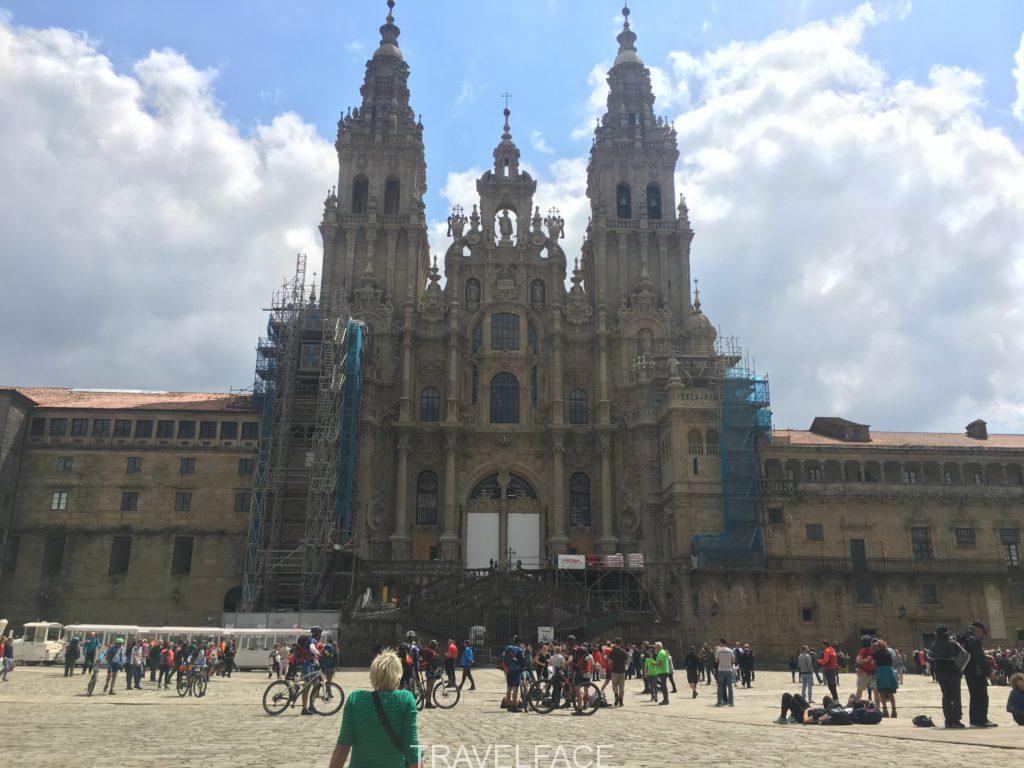


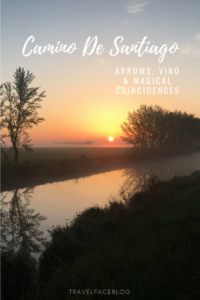
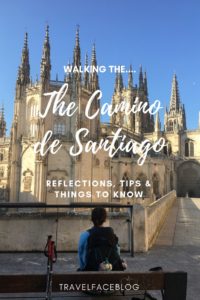
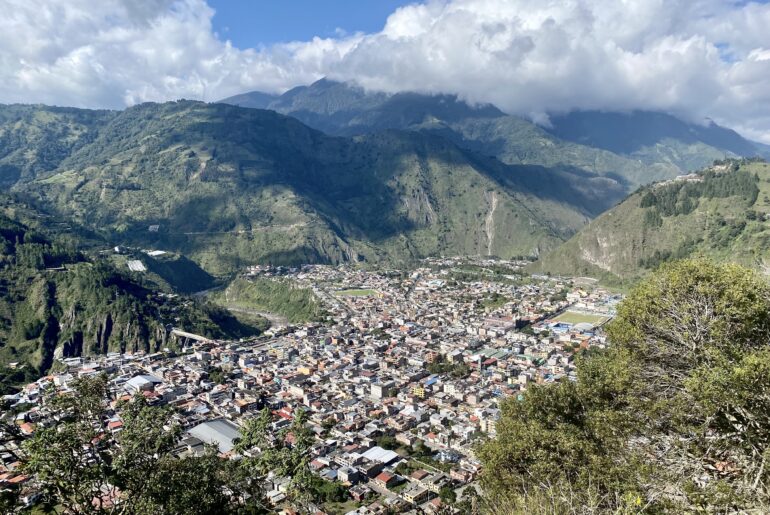
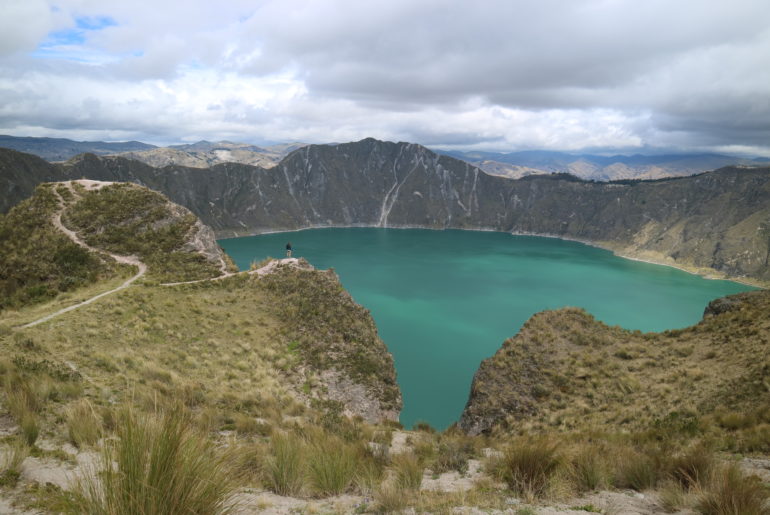
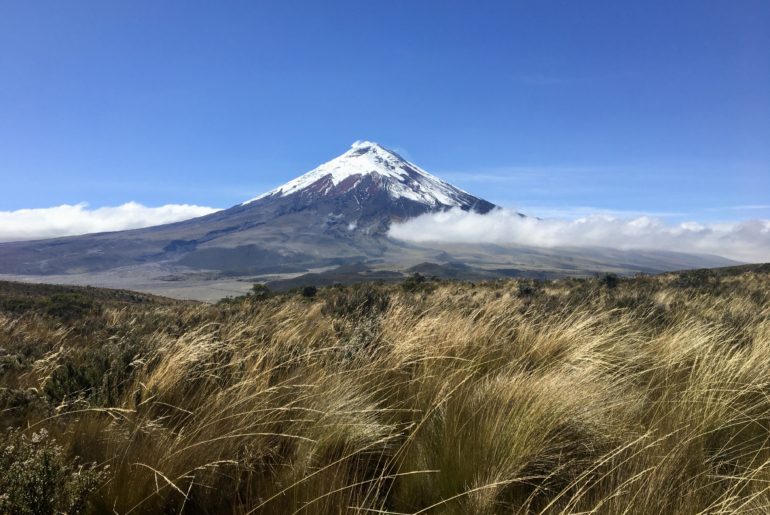
3 Comments
What an epic journey! I love hearing your learnings from this – sounds like you were so changed. I would love to walk the Camino some day – will have to do some training first! Right now, the only thing I would be good at is that second breakfast LOL!
https://teaspoonofadventure.com
Thank you so much, I hope you do too! Haha you will be surprised, many people do not prepare! Good luck!
Pingback: Camino packing list: Spring on the Camino de Santiago - travelface